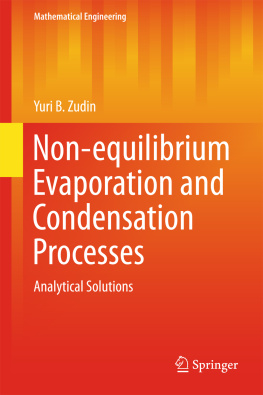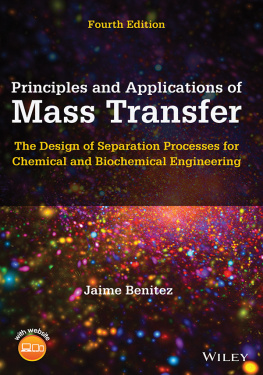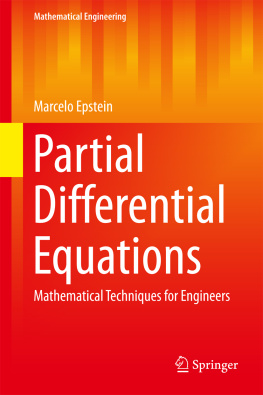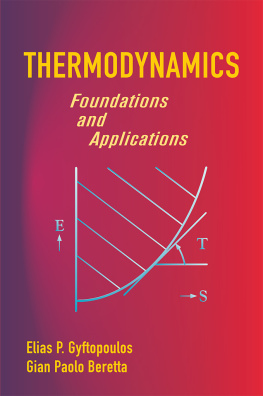1.1 Kinetic Molecular Theory
The statistical mechanics (at present, the statistical physics), which is considered as a new trend in theoretical physics and is based on the description of involved systems with infinite number of molecules, was created by Maxwell, Boltzmann, and Gibbs. An important constituent of the statistical mechanics is the kinetic molecular theory , which resides on the Boltzmann integral-differential equation. In 1872, Ludwig Boltzmann published his epoch-making paper [].
Metaphisycally, the kinetic molecular theory promoted the decisive choice between two alternative methods of describing the structure of matter: the continual and discrete ones. The continual approach operates with continuous medium and by no means is concerned with the detailed inner structure of matter. The system of Navier-Stokes equations is considered as its specific tool in application to liquids. The discrete approach traditionally originates from the antique atomistic structure of matter. By the end of the nineteenth century it was already generally adopted in chemistry; however in the time of Boltzmann no final decision in theoretical physics was made. It may be said that Boltzmanns theory played a crucial role in the solution of this central problem: the description of the structure and properties of a substance should be based on the discrete kinetic approach.
The time period at the end of the nineteenth century is noticeable in the European science by notorious philosophical discussions between the leading natural scientist. Wilhelm Ostwald, the author of energy theory in the natural philosophy considered energy as the only reality, while the matter is only a form of its manifestation. Being skeptical about the atomic-molecular view, Ostwald interpreted all natural phenomena as various forms of energy transformation and thus brought the laws of thermodynamics to the level of philosophic generalizations. Ernst Mach, a positivist philosopher and the founder of the theory of shock waves is gas dynamics, was a great opponent of atomism. Since at his times atoms were unobservable, Mach considered the atomistic theory of matter as a working hypothesis for explaining physical and chemical phenomena. Disagreeing with the energists (Ostwald) and phenomenologists (Mach), Boltzmann, nevertheless tried to find in their approaches a positive component and sometimes spoke almost in the spirit of Machs positivism. In his paper [], he wrote: I felt that the controversy about whether matter or energy was the truly existent constituted a relapse into the old metaphysics which people thought had been overcome, an offence against the insight that all theoretical concepts are mental pictures.
Irrespective of the fact that Boltzmanns theory depend on the simple kinetic molecular model (which now seems quite transparent), it looked fairly challenging for many physicists 150 years ago. The principal moment of the theory is the following postulate: all phenomena in gases can be completely described in terms of interactions of elementary particles: atoms and molecules. Consideration of the motion and interaction of such particles had enabled to put forward a general conception combining the first and the second laws of thermodynamics. The crux of Boltzmanns perceptions can be expressed in a somewhat simplified form as follows []: atoms and molecules do really exist as elements in the outside world, and hence there is no need to artificially generate them from hypothetical equations; the study of the interaction of molecules on the basis of the kinetic molecular theory provides comprehensive information about the gas behavior.
It is also worth pointing out that until the mid-1950s theoretical physics contained the caloric theory, which looked quite good from the application point of view. This theory was capable of adequately describing a number of facts, but was incapable of correctly describing transitions of various forms of energy into each other. It was the kinetic molecular theory that made it possible to ultimately and correctly solve the problem of the description of the heat phenomenon. So, from the metaphysical point of view, the kinetic molecular theory is an antithesis to both the energetic and the phenomenological approaches.
Boltzmann introduced into science the concept of the statistical entropy, which later played a crucial role in the development of quantum theory []. Few years after Einstein, Planck introduced the concept of a quantum of light. The BoseEinstein statistics and FermiDirac statistics both have their roots in Boltzmanns statistical method. Finally, the second law of thermodynamics (increase of the entropy for a closed system) is obtained as an equivalent of the H-theorem.
Boltzmann equation, which was obtained, strictly speaking, for rarefied gases, proved applicable also to the problem of description of a dense medium. Succeeding generations of scientists investigated in this way plasmas and mixtures of gases (simple and polyatomic ones), molecules were being considered as small solid balls. It is worth observing here that the kinetic molecular theory was a link between the microscopic and macroscopic levels of the description of matter. The solution to the Boltzmann equation by ChapmanEnskogs method of successive approximations (expansion in terms of a small parameter near the equilibrium) had enabled one to directly calculate the heat-conduction and the viscosity coefficients of gases.
For many years, due to its very involved structure, the Boltzmann equation had been looked upon as a mathematical abstraction. It suffices here to mention that the Boltzmann equation involves a 5-fold integral collision integral and that in it the distribution function varies in the seven-dimensional space: time, three coordinates and tree velocities. From the applied point of view, the need for solving the Boltzmann equation was at first unclear. Various continual-based approximations proved quite successful for near-equilibrium situations. However, in the 1950s, with the appearance of high-altitude aviation and launch of the first artificial satellite, it became eventually clear that the description of motion in the upper atmosphere is only possible in the framework of the kinetic molecular theory. The Boltzmann equation also proved to be indispensable in vacuum-engineering applications and in the study of motion of gases under low pressure conditions. Later it seemed opportune to develop methods of kinetic molecular theory in far-from-equilibrium situations (that is, for processes of high intensity).
It appeared later that the Boltzmann equation can give much more than it was expected 100 years ago. The Boltzmann equation proved capable of describing involved nonlinear far-from-equilibrium new type phenomena. It is worth noting that such phenomena were formulated originally from the pure theoretical considerations as a result of solution of some problems for the Boltzmann equation.







